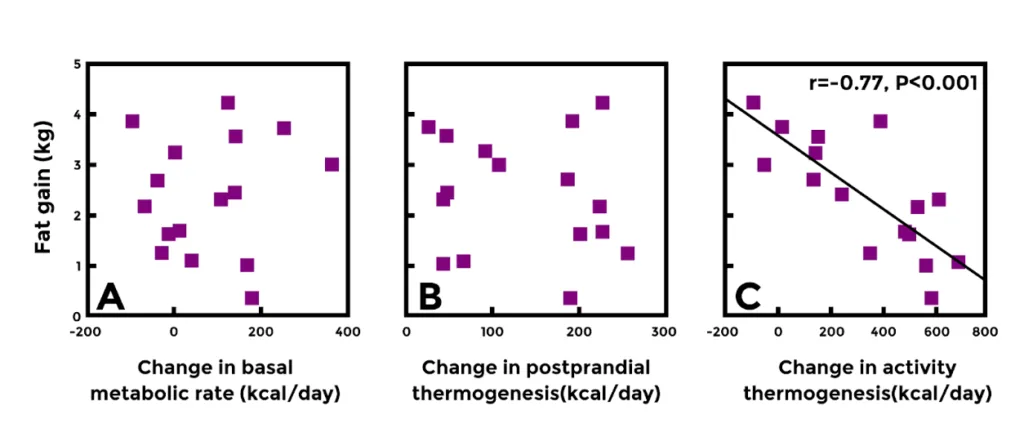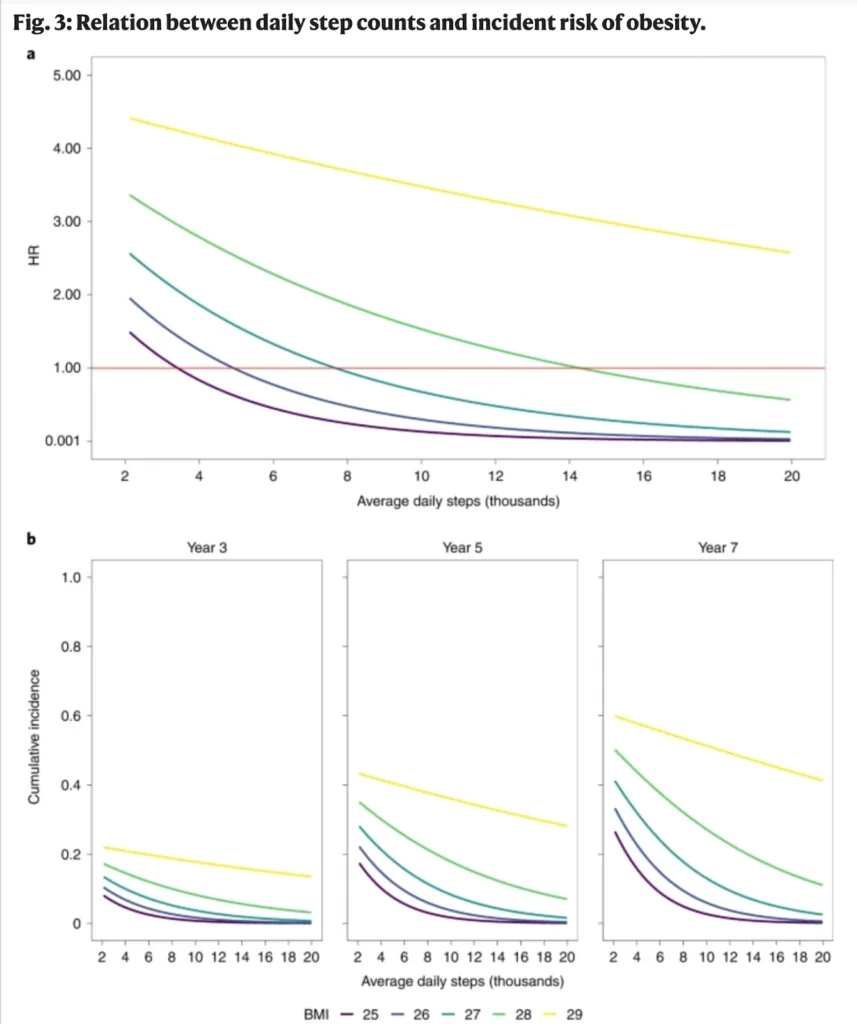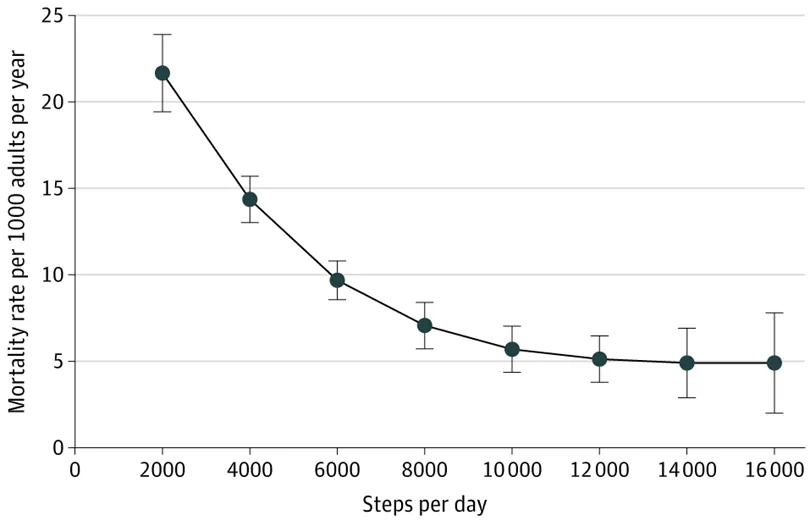One of the most common rules of thumb in the weight loss industry is that people should try to get ~10,000 steps per day.
In fact, many commercial fitness trackers and step counters set 10,000 steps a day as the default target when you first put them on.
But why is this 10,000 number so magical? Or is it even magical at all? Do you actually need 15,000 steps… or maybe only 5,000 steps?
Well it turns out it is less about an exact number and more about what your step count represents.
This article is going to explore the concept of step count and provide you with more context and practical advice about how you should think about your step count in relation to your goals.
Jump to a Topic
How Many Steps a Day to Lose Weight
What Is Step Count Really Measuring
The truth about step count is that it is not actually about step count, it is about physical activity.
When you see a step count on your watch or your smart phone it is indeed measuring step count per se, but the exact number of steps you take is not what truly matters. What is actually important is the physical activity you are engaging in and the calories you burn by just moving around, and we measure that movement and activity using step count as a surrogate measure.
Put simply, when you move your feet you are engaging in physical activity, that physical activity burns calories.
Step Counts are Pretty NEAT
We need to get a bit technical here as this is where the real magic with step count is.
We can categorize our daily energy expenditure into basically four main buckets.
The first bucket is our basal metabolic rate. These are the calories we burn just by being alive – breathing, blood pumping, organs doing organ things, etc.
The second bucket is the thermic effect of food. These are the calories our body burns digesting the food we consume.
The third bucket is exercise activity thermogenesis (EAT). These are the calories our body burns during structured exercise – running, cycling, weight lifting, playing a sport, etc.
The fourth bucket is our non-exercise activity thermogenesis (NEAT). These are the calories our body burns by being physically active in our daily life that is not structured exercise – doing chores, walking or cycling to commute places, gardening, fidgeting, pacing back and forth on phone calls, etc.
Now here is a VERY interesting fact about these four buckets. The NEAT bucket is the single most important bucket for weight management.
Let me repeat that.
The NEAT bucket is the single most important bucket for weight management.
In fact, if you take every weight loss study ever done that has measured these four buckets of energy expenditure, NEAT is the most predictive of whether or not people lose weight AND how much weight they lose.

NEAT is pretty neat, and it is effectively what step counts measure for most of us.
When we wear a FitBit, Apple Watch, Oura Ring, or simply keep our smart phone in our pocket, the step counts are effectively measuring how much we are moving throughout the day. However, the step count number itself is not really what we care about. What we care about is how many calories we burned through the day above our basal metabolic rate, for which step count is a surrogate measure.
The more our step count increases, the greater our calorie expenditure becomes.
The greater our calorie expenditure becomes, the easier it is to manage body weight.
How Many Steps Do I Actually Need?
The reality here is that the 10,000 number that has become very popular is relatively arbitrary. It does not take into account individual variation, other daily physical activity (especially weightlifting), nor whether or not those steps are going up an incline. Lastly, that target does not reflect the fact that everyone has different goals – if you are trying to gain weight or lost weight you will have drastically different goals for energy expenditure, which means different step count goals.
With that being said, there are some rough “targets” for step count and, as a proxy, NEAT levels people can aim for. If we focus specifically on weight loss and weight management, 6,000 to 10,000 steps per day is a good target for most people. However, there is a bit of a caveat here.
A study published in Nature Medicine found something very interesting: for individuals with a BMI below 30, increasing your step count from ~2,000 per day to ~8,000 per day decreased your risk of developing obesity by ~70-75%. However, going from 8,000 steps per day to 10,000 steps per day provided almost no additional benefit. Effectively, above ~8,000 steps per day, more was not better… more was just more.
This was not quite the case for individuals with a BMI over 30 more steps were better… even upwards of 20,000 steps per day. This is likely due to the fact that individuals with a BMI over 30 are already defined as having obesity and increased calorie expenditure can improve weight loss.

Now let’s address the elephant in the room. Your step count, which is a rough measure of physical activity, is not just about weight loss. Physical activity is also a critical part of building health as well.
A study in the Journal of the American Medical Association (JAMA) found something very interesting about step count and all-cause mortality. The ideal range for most people to reduce their risk of death is ~8-10,000 steps per day. Similar to the weight loss study cited above, most of the improvements in all-cause mortality are seen going from 0 to ~8-10,000 steps per day. Step counts higher than this had diminishing returns.

Death is not the only thing walking helps you avoid. It also helps you avoid many of the things that can lead to earth as well. The risk of diabetes, depression, hypertension, and a host of other chronic diseases are also reduced with increasing step count with the same relationship being seen as the mortality rate: ~8-10,000 steps per day provides the most return on investment.
Steps and Calories
We started this article discussing how the real secret to your step count is the calories you burn from the physical activity required to move your body. But how do your steps translate into calorie expenditure? Well, thanks to groups of researchers over the last several decades we have some good insights into how many calories are burned per step(s).
Before I give you the math on it, I do have to give you some bad news. Humans are VERY efficient at walking, so your steps probably don’t burn quite as many calories as you think. In fact, it takes around 2,500 steps to burn 100 calories, which is ~ 0.04 calories per step.
If we translate this to our rough target of ~8-10,000 steps per day, this means just increasing your physical activity (NEAT) by ~300-400 kcals per day can provide MASSIVE health and weight management benefits.
Wrap Up
Step count is really just a surrogate measure for physical activity and calorie expenditure, specifically our NEAT calories. This specific part of our metabolism is actually one of the most important in terms of weight management and our overall health. Aiming for ~8-10,000 steps per day appears to provide the most bang-for-your-buck in terms of weight management and overall health.
Try our nutrition coaching, for free!
Be the next success story. Over 30,000 have trusted Macros Inc to transform their health.
Simply fill out the form below to start your 14-day risk-free journey. Let's achieve your goals together!

